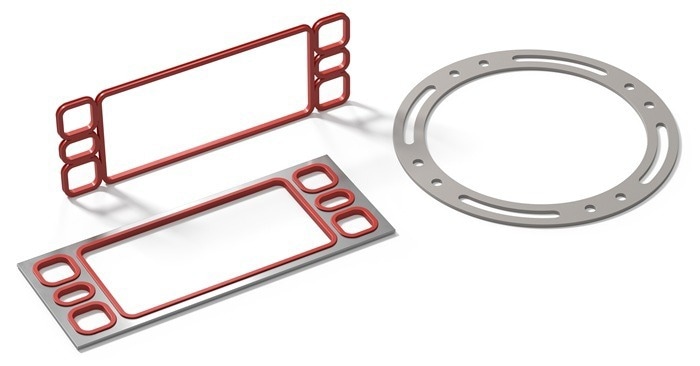The Prädifa Technology Division of Parker Hannifin, the global leader in the field of motion and control technology, has developed a wide range of sealing solutions tailored to the special requirements of electrolyzers and fuel cells – especially to the bipolar plates used in the cell stacks. The portfolio extends from rubber frame seals to injected composite seals to PTFE seals that are available even in XXL dimensions.

Image Credit: Parker Prädifa
Crucial for Efficiency and Safety
Electrolyzers and fuel cells play a key role regarding the sustainable production and use of hydrogen. They are systems that are closely related to each other in terms of technology. Their composition and functional principle are basically similar but the functional principle of a fuel cell is inverse to that of an electrolyzer. Electrolyzers and fuel cells can differ in terms of size, cell chemistry, and operating parameters, and partly entail different requirements, depending on their technology. Irrespective of the specific technical design, the stack that is responsible for the chemical reaction is always central to the system. It consists of various components including – among other things – the electrochemical heart of the fuel cell or electrolyzer: the membrane electrode assembly (MEA).
In turn, the bipolar plates are a central element of the stack. They serve as connecting elements between the individual cells and enable the transportation of gases and liquids between the electrodes. In addition to gas distribution and cooling of the stack, they are responsible for sealing the stack against the outside. Reliable sealing of bipolar plates poses one of the greatest challenges to designing fuel cell or electrolyzer systems. Inadequate sealing can lead to gas leaks or electrolyte loss, which may impair system performance, or to safety issues. The seals used are crucial for efficiency and safety of the total system and both reliable sealing against the outside and effective separation of the process gases within the system are essential to optimal performance of fuel cells and electrolyzers.
Sealing Solutions for Bipolar Plates
The operating conditions in fuel cells or electrolyzers pose major challenges to the seals. Depending on the functional principle of the system, they must be able to withstand high pressures, high temperatures, and/or corrosive media while ensuring that neither educts, products, or electrolytes can escape in an uncontrolled manner. That is a prerequisite for ensuring that the exacting requirements for the service life and safety of the fuel cell or electrolyzer system are met.
Aside from suitable materials, that calls for a simple, reliably operating, and easy to install seal design enabling cost-efficient and reliable mass production. Parker Prädifa has developed an extensive portfolio of various sealing solutions in a wide variety of sizes and shapes for that purpose. It extends from elastomer frame seals to composite solutions with seals that are connected to carrier frames or directly to the bipolar plate or other components of the stack (e.g., mounting frames, gas distribution structures, or membranes). For harsh application conditions and particularly high service life requirements, PTFE sealing solutions are available as well.
The following overview briefly summarizes the uses and beneficial properties of the various solutions:
- Rubber frame seals provide a cost-efficient solution. They can be produced either classically in a mold or by using continuous extrusion technology in practically any desired size and shape. Suitable for temperatures of up to 250 °C. Good compression set. Suitable for fuel cells (e.g., PAFC, AFC, PEM) and electrolyzers (e.g., AE, PEME).
- Injected composite seals can be applied directly to a bipolar plate or to a metal or plastic carrier frame. This considerably reduces assembly errors, times, and costs, and simplifies the installation process. The need for seal grooves may be eliminated in certain cases. The seals are available in large dimensions for electrolyzer applications (segment manufacturing).
- PTFE seals are particularly well suited for applications requiring high chemical resistance such as those in stationary fuel cells and electrolyzers operating with aggressive chemicals. They are characterized by high media resistance, long life, good electrical insulation properties, and high dimensional stability under load. These types of PTFE seals are available in specialty materials with enhanced permeation behavior and in XXL sizes of up to 4.5 meters as well.
Additional information about Parker’s sealing solutions for bipolar plates can be found at: